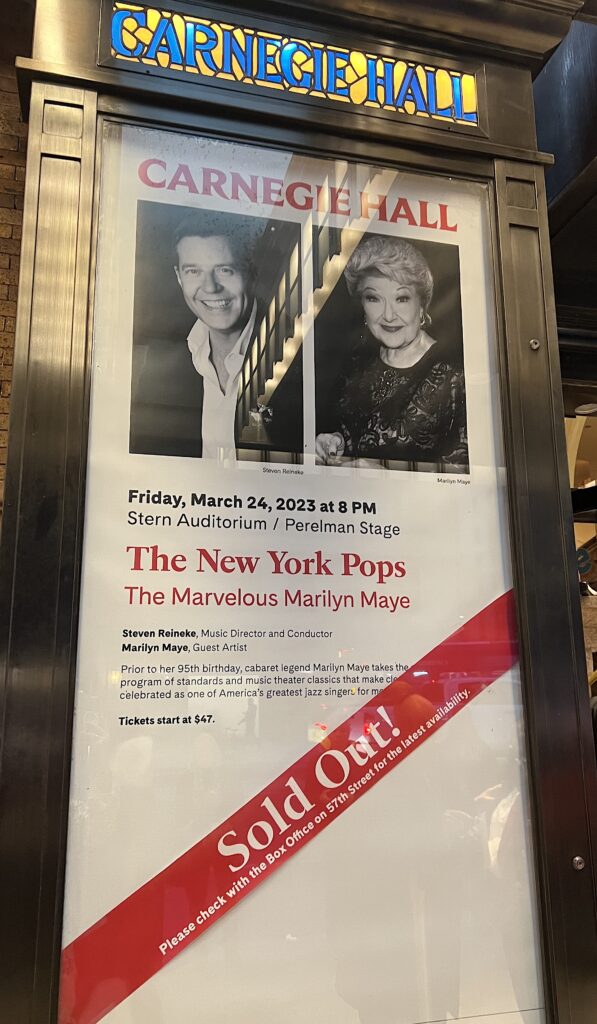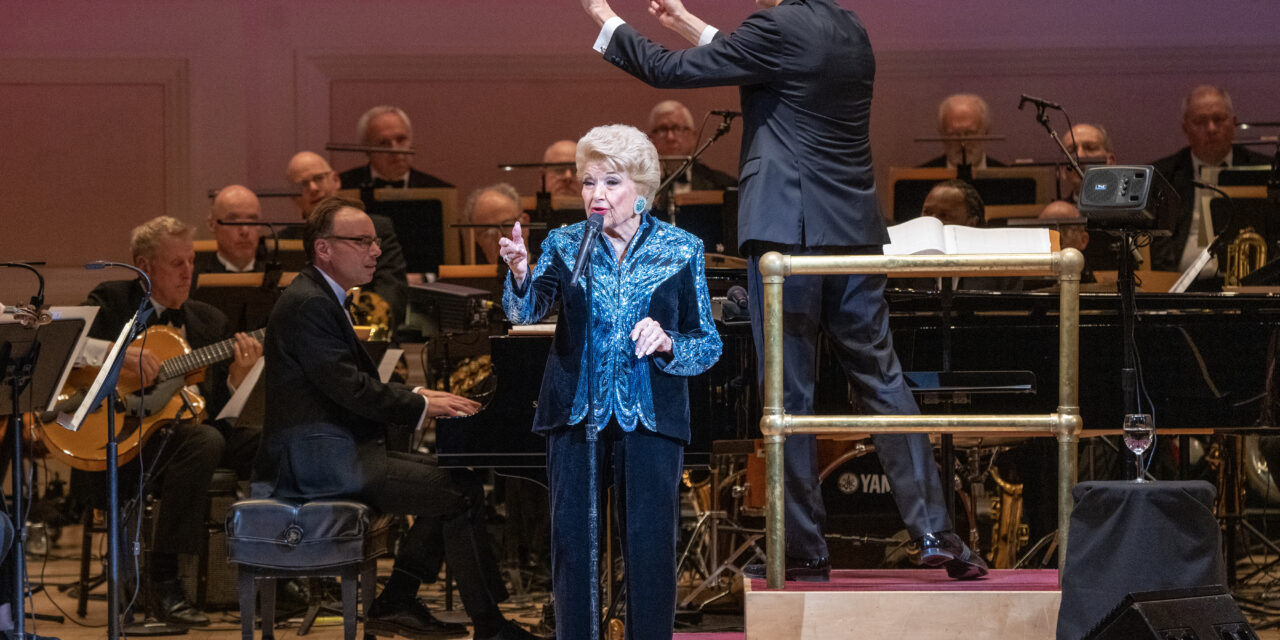By Marilyn Lester . . .
Should songwriter Cole Porter still be around, a revised version of “You’re the Top” would surely be all about Marilyn Maye, who’s been dubbed “Marvelous” for good reason. Who else would receive a boffo, prolonged, standing ovation just by walking out onto a stage—and in this case that stage was Carnegie Hall. In an evening for the ages, Maye was finally making her solo debut there, with The New York Pops behind her, led by Steven Reineke, music director/conductor. History will note that many, many, many more standing “Os” followed throughout this evening of song and tribute.
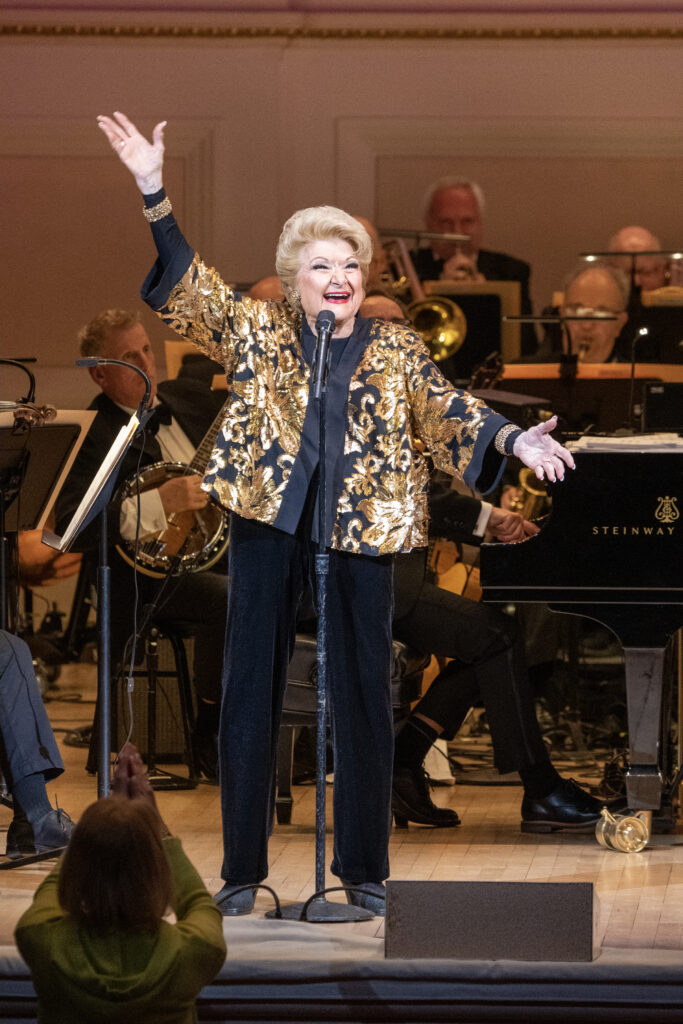
Legendary, iconic—Maye is one who defines those over-used honorifics. Should anyone question the universal praise she’s garnered, this review included, the proof of the pudding is in the eating. Doubters should simply attend one of her shows to cure their skepticism. Maye is about to turn 95 (her birthday is April 10) and she just keeps getting better, a feat in itself, considering she started off as wondrous. That start began while she was in grammar school in Kansas, and has continued ever since, with Maye picking up accolades almost from the beginning of her career. Among other amazing facts is that she appeared an unheard of 76 times on “The Tonight Show with Johnny Carson.” No other singer even comes close to that record.
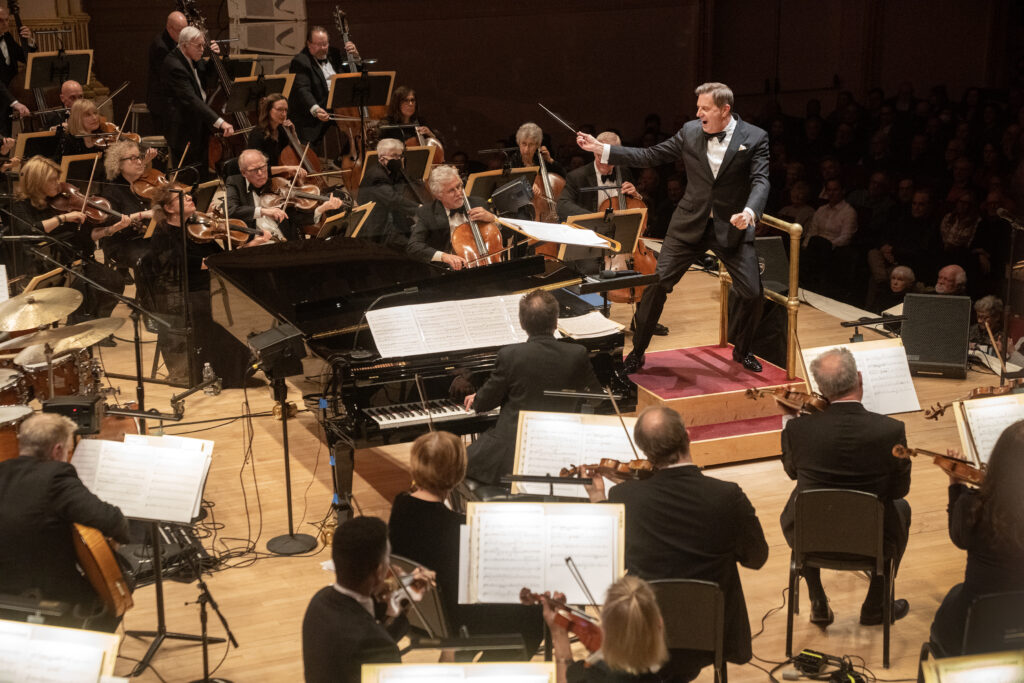

The evening at Carnegie began with the big, beautiful sound of the 80-member Pops and the overture from Mame (Jerry Herman), signaling that Maye has also had a career starring in musical theater. She was not only Mame, but Dolly Levi in Herman’s Hello, Dolly!, whose overture began the second act of the event. Characteristically, the sound was dynamic and tight. And Reineke is, as always, the charismatic, energetic leader who ultimately delivers that bright, sensational sound. Enter Miss Maye and the eruption of applause, with folks leaping out of their seats as fast as they could stand. Into a Cole Porter medley she dove, with numbers that included “Looking at You,” “I Get a Kick Out of You” and “All of You.” A savvy listener will get the drift almost instantly: out of a vast repertoire, Maye crafts her set list to fit the occasion. Audience love and appreciation was her starting point—and as she herself notes, she sings to you, not at you.
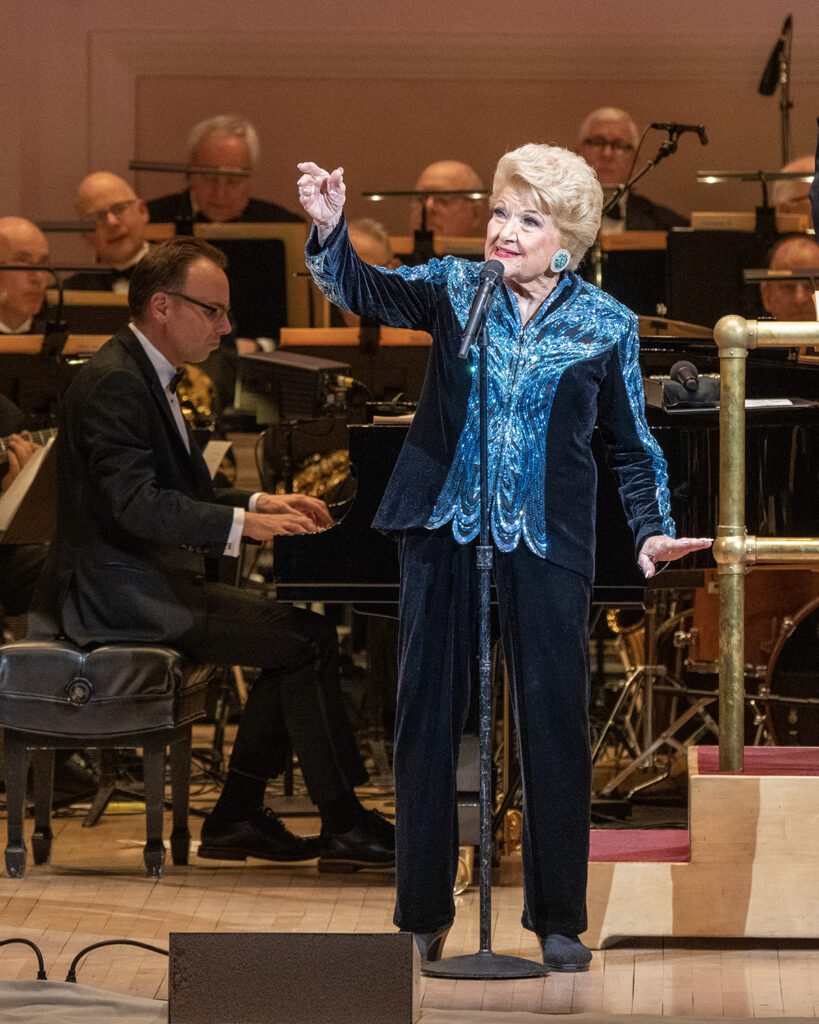

What makes Marilyn Maye great? To paraphrase Robert Browning’s Sonnet 43, “How do we love thee? Let us count the ways.” There is the physicality: Maye is an athlete of song; imagine the endurance involved in creating and singing those medleys (which also included her “Rainbow Medley” for this evening) and the stamina of playing an entire set without letup. Her energy and dynamism would be astounding for a singer a third of her years, not to mention a vocal instrument that never seems to age. In the realm of personality, there’s her genuine love for what she’s doing and for her partnership with her audience. She has the capacity to reach out and draw each person inexorably to her. When she quips about the enormity of Carnegie Hall and says “kind of a night club, isn’t it?” she’s not far off the mark. Who else could make that giant concert hall shrink to cabaret room intimacy? There’s her intelligence, her spontaneity and keen wit and humor. She looks at Reineke and says, “one night only?” and everyone breaks up. Then there’s the ineffable: the charisma, the force of personality, the mystique and the magic.
For the last sixteen years, Maye has worked with pianist Tedd Firth and a core trio of Tom Hubbard on bass and Mark McLean on drums. The three were embedded within the orchestra, often leading on a tune before the Pops joined in. Such was the case with Mame’s “It’s Today,” in which she delivered one of her famous high kicks, as well as a stunning a cappella start to “Look to the Rainbow” (Burton Lane, Yip Harburg) with Firth joining in before the entire orchestra took part. Maye is equally facile singing Broadway and pop styles, but her heart is in jazz. A jazz version of “On the Street Where You Live” (Frederick Loewe, Alan Jay Lerner), arranged in part by Firth, featured Maye’s sparkling jazz phrasing and ability to scat with the best of them, and that includes the originator of the style, Louis Armstrong.
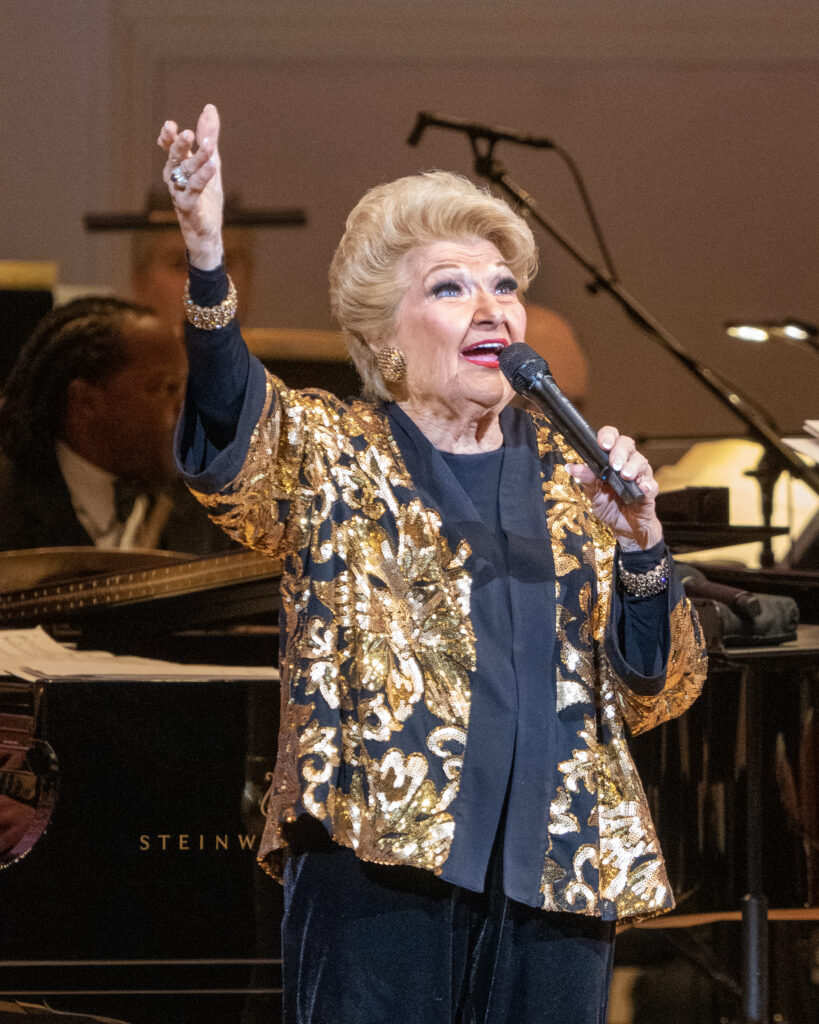

The second act of the concert featured story songs. Here’s where Maye flies high above the crowd with an interpretive ability that cuts to the heart of a number—and zings an arrow straight into the core of a listener’s being. Her recording of “Too Late Now” (Lane, Lerner) was immortalized when the Arts Council of the Smithsonian Institution selected it for the album of the 110 Best American Compositions of the Twentieth Century. Her most-requested song, as she reported, is “Guess Who I Saw Today” (Murray Grand, Elisse Boyd) and was it a zinger. Like many mature vocalists, age and experience count. Although she was always a stellar storyteller, the ups and downs of her life come through in her delivery, with no-holds-barred authenticity. When she sings “I’m Still Here” (Stephen Sondheim), you know she means it.
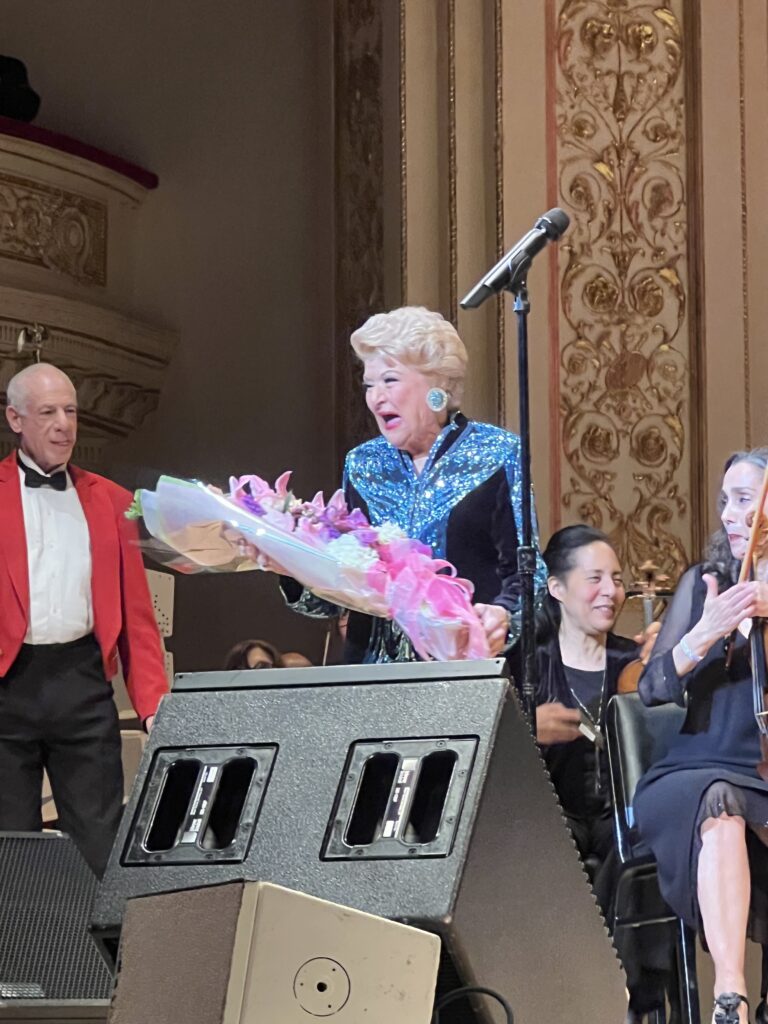

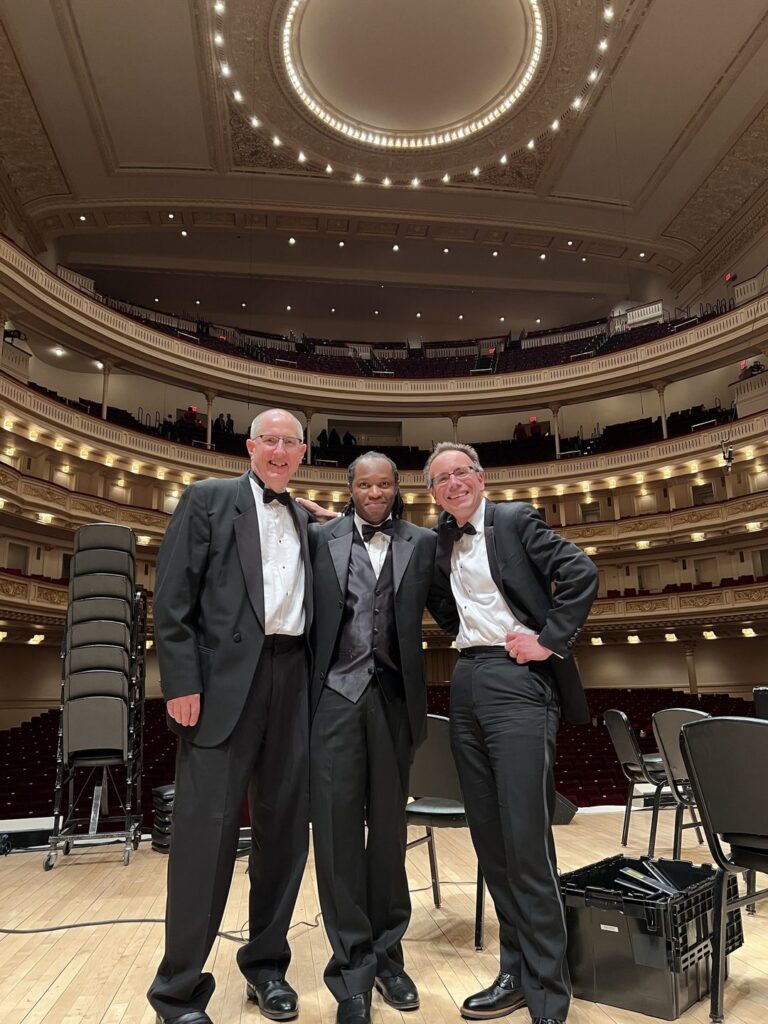

Tom Hubbard, Mark McLean, Tedd Firth
One of the joys of the evening was the presentation of flowers and a proclamation from New York City Mayor Eric Adams, declaring March 24, 2023 as Marilyn Maye Day. What a delight to sing “Happy Birthday” to her. In a speech of acknowledgment, voicing her gratitude for the evening and her debut at Carnegie Hall, she quipped, “God knows I practiced enough.” Her humility shone through. As they say in the computer world, WYSIWYG—what you see is what you get. There are no airs and graces in Miss Maye; she’s true blue all the way. Closing a historic night—and yes, this is one of those rare moments in time that will go down in cultural history—in which she also scintillated in two different Bob Mackie-designed outfits, Maye sang her philosophy of life: “The Secret O’ Life” (James Taylor) and “Here’s to Life” (Artie Butler, Phyllis Molinary). Amen to that. The ending came all too soon, and one couldn’t help but wonder what would Johnny Carson say about his favorite singer, his “Super Singer,” now? Perhaps he’d shake his head sagely and say, “See, told you all along.”
Photos: Richard Termine except where indicated
